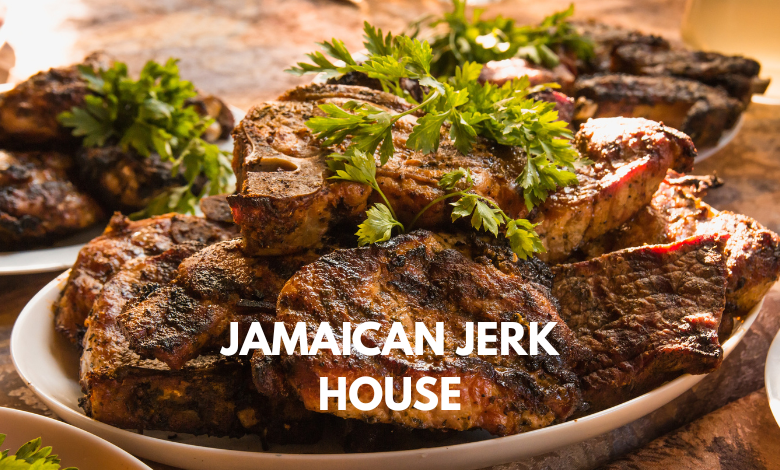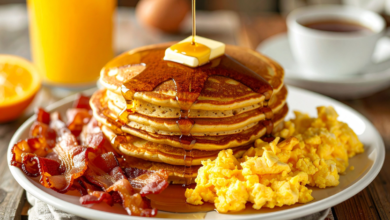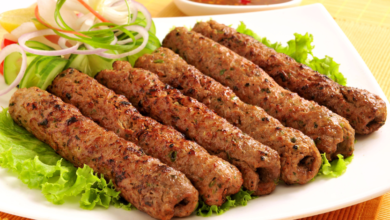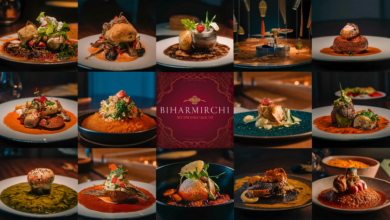Jamaican Jerk House: A Taste of Authentic Caribbean Flavor

If you’ve ever walked past a Jamaican restaurant and caught that smoky, spicy aroma floating out the door, chances are you’ve had a brush with jerk cooking. A Jamaican Jerk House is more than just a restaurant. It’s a place where culture, tradition, and bold flavors come together. For many people, jerk chicken or jerk pork is the first taste of Jamaica they experience. But behind that heat and smokiness is a rich story that connects to the island’s history and its people.
I still remember the first time I tried jerk chicken at a small Jamaican jerk house in Toronto. The cook handed me a paper plate piled high with rice and peas, fried plantains, and a piece of chicken so charred it almost looked burnt. One bite, though, and I was hooked. The spice had kick, but it wasn’t just heat. It was layered with sweet, smoky, and earthy flavors that felt both comforting and exciting. That’s when I understood why Jamaican jerk houses are so loved.
The Roots of Jerk Cooking
The word “jerk” comes from the Spanish term charqui, meaning dried meat, which later turned into the word “jerky.” But in Jamaica, jerk cooking took on a life of its own. The tradition is believed to have started with the Maroons, who were Africans that escaped slavery and built free communities in Jamaica’s mountains. To survive, they developed a way to preserve and cook meat using spices they found on the island, like allspice and Scotch bonnet peppers, and by slow-smoking it over pimento wood.
Over time, jerk became more than just a way to cook. It became a cultural identity. Eating jerk today connects you to centuries of resilience, survival, and celebration. When you visit a Jamaican jerk house, you’re not just tasting food. You’re experiencing history in every bite.
The Jamaican Jerk House Experience
Walking into a Jamaican jerk house feels different from your average restaurant. The atmosphere is often casual and warm, with reggae or dancehall music playing in the background. Many jerk houses are small, family-run spots that focus more on the food than fancy décor.
The menu usually highlights jerk chicken, pork, and sometimes fish, but you’ll also find staples like rice and peas, fried dumplings, curry goat, and oxtail. If you’re lucky, you’ll also see patties (savory pastries filled with spicy beef or chicken) and festival (sweet fried dough that balances out the heat).
A true Jamaican jerk house is about community. People come for the food but also for the vibe. Sharing a plate of jerk chicken with friends, laughing over cold Red Stripe beer, and dipping into homemade pepper sauce is an experience that goes beyond just eating.
Read Also: National House of Pancakes: A Complete Guide to Pancake Culture, Dining, and Tradition
Signature Dishes at a Jamaican Jerk House
The star of the show is, of course, jerk chicken. Marinated for hours, sometimes overnight, in a blend of Scotch bonnet peppers, allspice, thyme, ginger, and garlic, the chicken is then grilled slowly over pimento wood. The result is smoky, juicy meat with a spicy crust.
Jerk pork is another favorite, usually fattier and even richer in flavor. Some jerk houses also serve jerk fish, shrimp, or even vegetarian options like jerk tofu or mushrooms.
Sides are essential. Rice and peas are the perfect base, fried plantains bring sweetness, and coleslaw adds crunch and freshness. Many jerk houses also serve Jamaican drinks like sorrel (a spiced hibiscus beverage), ginger beer, and tropical juices.
The Magic of Jerk Seasoning
What makes jerk food special is the seasoning. A proper jerk marinade includes Scotch bonnet peppers, which are small but extremely hot, paired with allspice (also called pimento), thyme, garlic, ginger, nutmeg, and cinnamon. This combination creates a balance of heat, sweetness, and earthiness.
If you’ve ever tried making jerk at home, you know it’s not just about throwing in chili powder and paprika. Authentic jerk seasoning has depth, and every Jamaican family or jerk house has its own version of the recipe. Some add soy sauce for richness, others use honey or brown sugar to balance the heat.
Global Popularity of Jamaican Jerk Food
Today, Jamaican jerk houses are found all over the world. From London to New York to Toronto, the popularity of jerk food has spread beyond the island. Part of this is due to the Jamaican diaspora, who brought their food traditions with them wherever they went.
Another reason is simply taste. Jerk food stands out. It’s bold, spicy, and unforgettable. In a food world where people are always looking for something new and exciting, Jamaican jerk hits the spot.
Cooking Jerk at Home
While nothing beats the taste of jerk cooked over pimento wood, you can try making it at home. Many grocery stores now sell jerk marinades or dry rubs, but if you want to go authentic, make your own. Blend Scotch bonnet peppers, garlic, thyme, ginger, onion, soy sauce, lime juice, and spices like allspice and nutmeg. Marinate your meat overnight, then grill it slowly.
I once tried making jerk chicken in my oven. It turned out good, but I’ll admit, without the smoky charcoal flavor, it wasn’t the same. That said, it’s still a fun way to connect with Jamaican cooking, especially if you don’t have a jerk house nearby.
Finding a Jamaican Jerk House Near You
When looking for a Jamaican jerk house, pay attention to reviews that mention authenticity. The best spots are often small, family-owned places rather than big chains. Don’t be afraid to try the sides and extras too. A good jerk house will make their rice and peas from scratch, use fresh plantains, and offer homemade sauces.
If you’re new, start with jerk chicken, rice and peas, and fried plantains. Add a Jamaican patty if you’re hungry, and wash it down with ginger beer. That’s the classic jerk house meal.
Health and Nutrition
Jerk food is often grilled, which makes it healthier than deep-fried fast food. The spices themselves, especially allspice and peppers, have antioxidants and anti-inflammatory benefits. That said, the meat can be fatty, especially jerk pork, and the sauces are often salty. If you want a lighter option, jerk fish or chicken breast is a great choice. Pair it with steamed veggies instead of fried sides.
Conclusion
A Jamaican jerk house is more than just a restaurant. It’s a celebration of Jamaican culture, resilience, and flavor. Whether you’re visiting one for the first time or you’ve been going for years, the smoky, spicy taste of jerk food leaves a lasting impression.
If you haven’t yet, find a Jamaican jerk house near you and give it a try. Don’t just order the chicken. Explore the menu, chat with the staff, and soak in the atmosphere. Food this rich in history and flavor deserves to be experienced fully.
FAQ
1. What is Jamaican jerk food?
It’s a style of cooking where meat is marinated with a spicy mix of peppers, herbs, and spices, then slow-grilled over pimento wood.
2. What is the most popular jerk dish?
Jerk chicken is the most popular, followed by jerk pork.
3. Is jerk food always spicy?
Yes, it usually has heat from Scotch bonnet peppers, but it’s also flavorful with herbs and spices.
4. Can vegetarians enjoy jerk food?
Yes. Many jerk houses now offer jerk tofu, mushrooms, or veggie platters.
5. Is Jamaican jerk food healthy?
It can be. Grilled jerk chicken or fish with vegetables is a balanced meal, though some dishes are richer and heavier.


